Before going to a foreign country many people research the areas they are interested in and then decide where they are going to stay and what they are going to do while they are there. Some people may look at the weather or go during a certain season so that it is the most enjoyable to them. Even fewer people will research and learn about the government of the country they will be staying in and its relationship with their home country.
As my last days while studying abroad in Greece come to a close, there is yet another very important lesson that I have learned that I wish to share with those who takes the time to read this blog. Having traveled to a number of countries outside the U.S. it is evident that there are not nearly as many safety features in place to protect tourists as compared to the U.S.
While studying in Greece it came to my attention that almost no one traveling abroad researches the geologic hazards of the places they are traveling to. I found that in many cases the government will try to hide these hazards, or at the very least, not inform tourists of the geologic hazards.
I am in my third year of studying engineering and thinking about switching my major to geology, so coming to Greece I had a strong interest in both aspects. During our first week in Santorini both geology and engineering came into play, and I was intrigued.
On the North end of Thera (the large island of Santorini) we were just starting out our second hike when Lisa, our professor, stopped us. She pointed across the slope where a beautiful white house sat on a cliff face, and that is where my curiosity to find others like it across the island began.
We would walk past this particular house on the way to Oía. Outside there was a sign that said “Rchitech’s House”. A Greek architect had built his house on the cliff face looking δutiká (west) out into the caldera rim. The view was spectacular, but taking a closer look, I saw that the architect had built his own death trap.
The house was built into cliff face. The cliff is composed of what is left of Peristería, a composite cone volcano. The house is situated on top of two meters of Minoan Tuff. The Minoan Tuff is unconsolidated material, and is what makes the slope so unstable. Peristería is composed of andesites, basalts, and dacites that have been blown to bits several times in the last four caldera forming eruptions, making it very loose and unconsolidated.
The house also has a large pool. Pools can easily overweight a slope that is composed of unconsolidated material like this because just one gallon of water weighs 8.34 pounds. Thera has regulations on pool sizes, but these often go ignored.
In addition to being built into a cliff face, on unconsolidated material, and having a large pool, the house was also built on one of the most active fault lines in the Aegean Sea, the Koloumbo Line (see figure 1). The fault that the house was built on is situated on a horst and graben. A horst and graben is used to describe a region that is situated between normal faults, and is either lower or higher than the area that lies beyond those fault lines (see figure 2). This means, that a small earthquake would be devastating for this house, and the architect may find his house at the bottom of the cliff in the caldera.
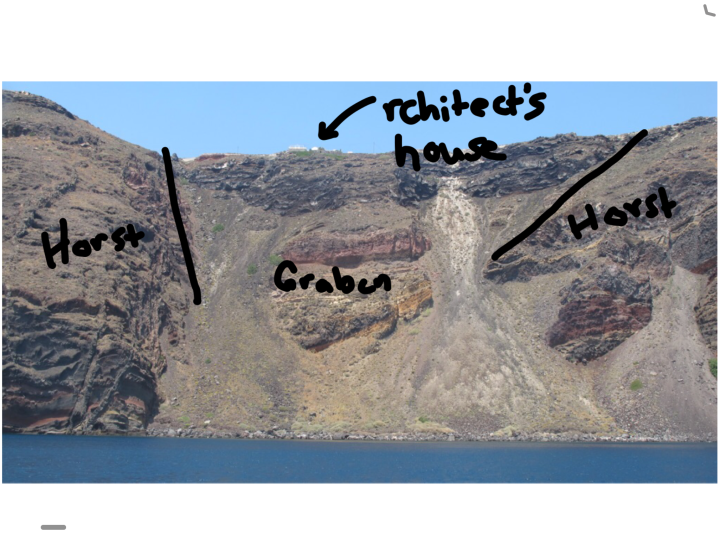
Figure 1: The cliff face below the “Rchitect’s House” can be seen in the above figure. The horsts and graben have been outlined.
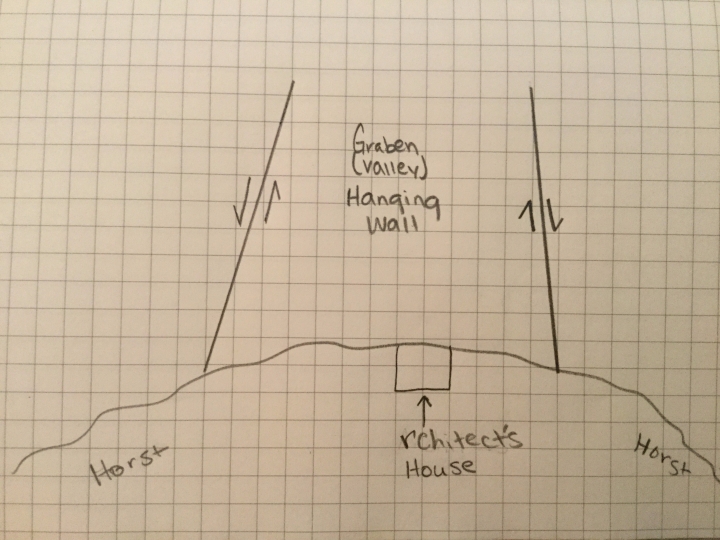
Figure 2: Above is a sketch from a bird’s eye view of the cliff to show what occurs in a horst and graben.
I was somewhat surprised, and a little intrigued when Lisa started listing off all the reasons mentioned above. This was such a poor place to build. Sure, it had a caldera view unlike any other, but I wondered why someone would put their life, and the lives of tourists who rented out the house in danger. As I would find out throughout the trip it came down to two things: money, and in like this case, they had no idea what they were building on.
In the U.S. there are regulations, and a number of people that must evaluate the integrity of the land before construction even begins. What little regulations are here in Greece are clearly not followed. Lisa spoke to the nephew of the architect on a previous trip and he told her that he had had no idea of the dangers of the land the house had been built on.
As we continued evaluating the material of the island in various locations, I really started to notice now how many of the homes and popular tourist locations that are in danger should an earthquake occur. One of these locations was the lighthouse that sits on the Akrotiri Peninsula.
The lighthouse sits on the Minoan Tuff, which is unconsolidated material. The area around the lighthouse has a number of overhanging cliffs. While we were visiting, I saw a number of tourists walk out on the cliffs as they were taking pictures. Doing so put them at risk of falling should the overhanging cliffs collapse with their added weight. The lighthouse is also situated on the hanging wall of a normal fault. An earthquake could make this area very unstable and dangerous.
Lisa pointed out another normal fault as we were walking down to Caldera Beach. Caldera Beach was one of my favorite beaches because it is the only beach we went to that looks out into the caldera. All other beaches are on the outside of Thera. The red rocks of the cliffs and black sand at the beach make an impressive contrast to the blue water of the Aegean Sea.
At Caldera Beach there is a house built on the cliff that has a normal fault runing through. The house is situated on the footwall that can be seen in the figure below. The footwall is made of Cape Riva Tuff, while the hanging wall is composed of the first three phases of the Minoan (see figure 3). Large cracks in the cliff face were visible from the road.
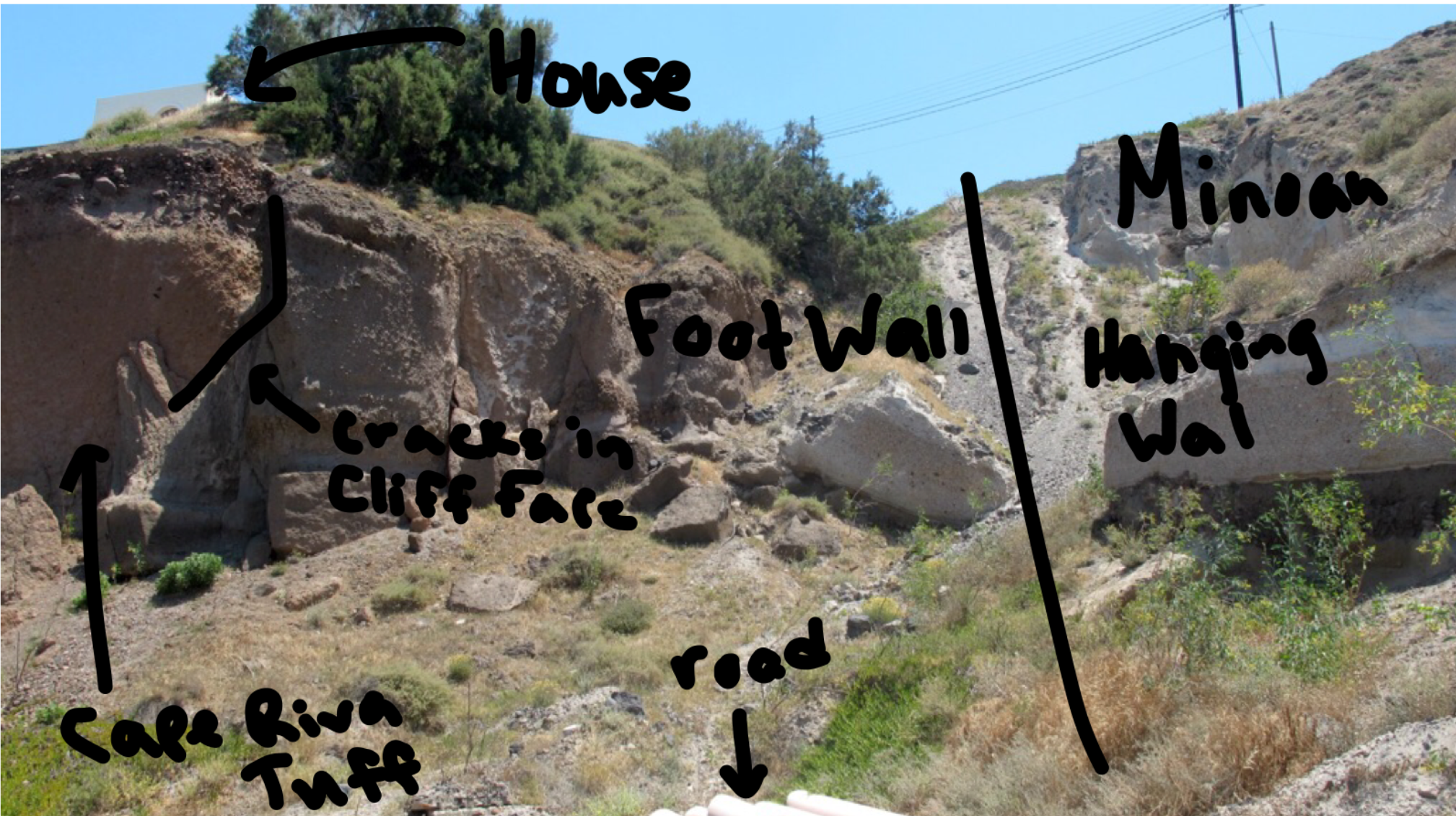
Figure 3: A photograph from the road of the cliff face below the house at caldera Beach.
One of the largest depositions of the Minoan eruption that we looked at was at Vlychada Beach on the Akrotiri Peninsula. I was impressed by these large depositions because some of them were 50 meters thick! This beach was also significant because it is protected under the Akrotiri Excavations. People are not permitted to build up to 150 meters from the beach so as to keep it in its natural state. It is one of the few beaches where there are no restaurants, and no hotels.
A few months ago a builder tried to change this illegally. They started building a four story hotel into the Minoan layer emulating the cave houses that are found throughout the island. It was not until a large hole was put into the side of the cliff, opening up a view to the beach, that people became aware of the building (see figure 4).
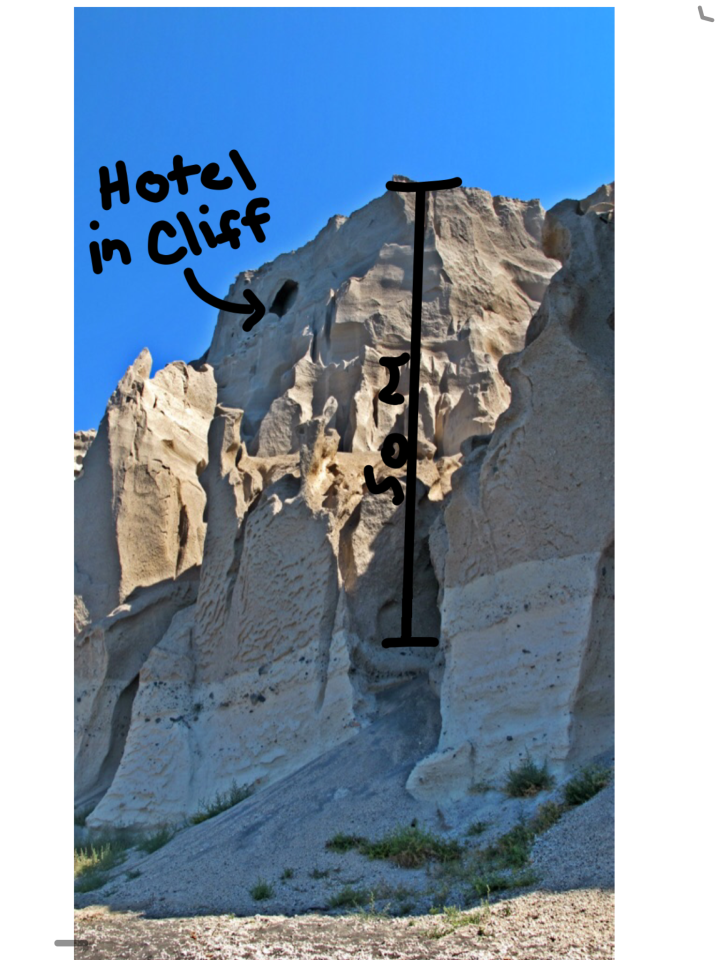
Figure 4: A view from Vlychada Beach looking up at what is left of the hotel in the cliff face.
There was uproar from thousands of people who wanted to protect Santorini and the history of the Minoans from the ever increasing tourist industry. Eight outside sources and thousands of people came together to push the builder out. When the builder left, they filled in the entire structure with concrete. The mass of the concrete has over weighted the slope and made it extremely unstable, not to mention the artifacts of the Minoans that could have been damaged and taken (1).
Seeing this huge hole in the side of the cliff amazed me that someone would illegally destroy a protected landmark. This was one of the few beaches on the island that had not been taken over by tourism. I appreciated the quiet beach without large numbers of people.
From an engineering perspective I couldn’t believe that people were building in all these places without proper procedures and certifications. It was one of the last places we would go that I was truly surprised that the government would take no action in the building that was occurring. It is evident that corruption and the lack of resources to enforce regulations is a large part of why illegal building occurs in Santorini.
Oía is one of the most populated, beautiful, and most expensive places to get a hotel in Santorini. It is also one of the most dangerous places to stay on the island, and most people don’t even know it.
On Boat Day, my class boarded a small wooden boat and toured the inside of the caldera with our professor, Lisa. She pointed out a number of different faults running through the cliff faces and other geologic features. We ended in Oía where Lisa pointed out the Red Zone, the no build zone. In the red zone there are dozens and dozens of new hotels that have recently been built.
In figure 5 it is apparent that all the hotels are built on loose unconsolidated material. This material amplifies the waves from the earthquake because they get trapped in the material. An earthquake of a four or five could send all those hotels down the cliff face. As we walked up the cliff face back to the car from the port, we could see a net, almost like chicken wire keeping the loose material in place (see figure 6).
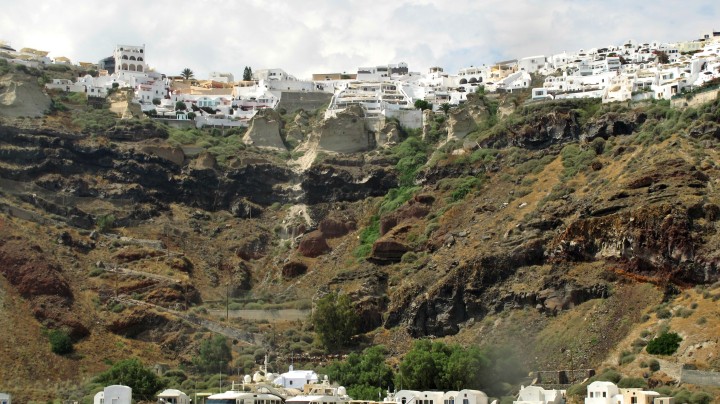
Figure 5: Photo taken of the Red Zone in Oía from the water.
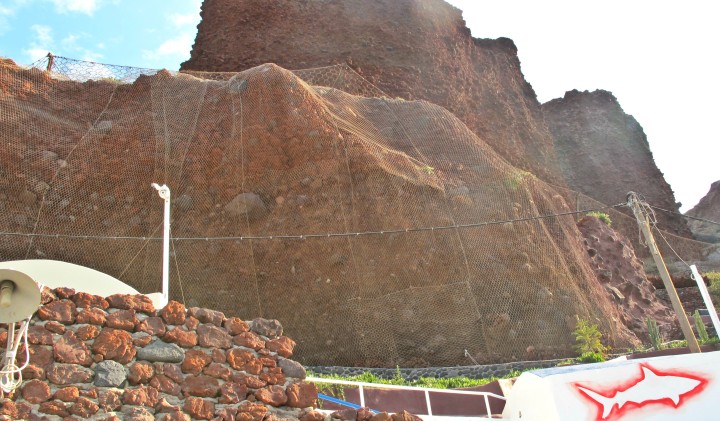
Figure 6: The wire netting used to hold up loose rock below Oía at the port.
When we met with Evi Nomikou, a native to Santorini and Professor of geology at the University of Athens, she said that she had gone to the Greek government to try and require all hotels in Oía to have pamphlets in their hotel rooms warning guests of the dangers of staying in a hotel on the edge of Oía. The mayor of Santorini refused the proposition because he didn’t want to impact the tourist industry.
I was intrigued to see if other tourists were aware of the dangers of staying on a hotel in Oía, and my questions were answer toward the end of our trip when we met Evi Nomikou in Oía to hand out surveys to tourists to find out what they knew about the geologic hazards.
I found that almost no one wanted to learn about the geologic hazards. Those that did take the survey often didn’t want the answer key to learn about the hazards. Some people that visited Nea Kameni didn’t even know it was a volcano, let alone an active one. It also surprised me that people did not even want to be knowledgeable so that they were at least aware and could make calculated and informed decisions.
This class has shown me that it is important to be self-aware, and knowledgeable about the locations I am traveling to. Before traveling it is important to not only research the location safety, stability, and relationship that the country I am traveling to has with my own, but the geology of the area as well.
Like here on Santorini, the hazards of earthquakes, volcanic eruptions, flooding, landslides and cliff collapse are all real hazards that tourists should be aware of.
Countries who are especially struggling in their economy are not going to jeopardize one of their main sources of income, tourism, so it is up to the tourist to be informed. Being informed is one of the most valuable tools that I and other tourists have watch out for our own safety, and not count on others to.
Sources
(1) Lialios, Giorgos. “Santorini Landmark at Risk, Giorgos Lialios | Kathimerini.” Santorini Landmark at Risk | Community. Ekathimerini.com, 23 Nov. 2016. Web. 20 June 2017.

You are an excellent writer. Each blog that you have posted has been thoroughly researched, well-organized, and very interesting to read. Really excellent work Sheridan!
Thank You Lisa. Through this class you have helped me discover a new passion and desire to learn.
Your blog flows so well. It starts off with a very interesting generalization of foreign travel and condenses into a topic that easily flows into geologic and engineering aspects. Each paragraph has a perfect amount of personal and scientific aspect to it. As I remember this is the first time someone has done a blog post like this, so way to go to set the bar. Fantastic job, really
Hi Sheridan,
You did a great job breaking down information with your pictures and explanations of them, like how you explained how there was a house on a cliff with a fault going through it and utilized the picture to show how it is position near the fault and the cliff wall. In your third paragraph I did notice that you use the word “hazard” in quick succession. This could cause you to sound repetitive and could distract your readers from focusing on the information you are giving them. Try using synonyms for hazardous like dangerous, risky, or unsafe to keep from using the same word one after another.